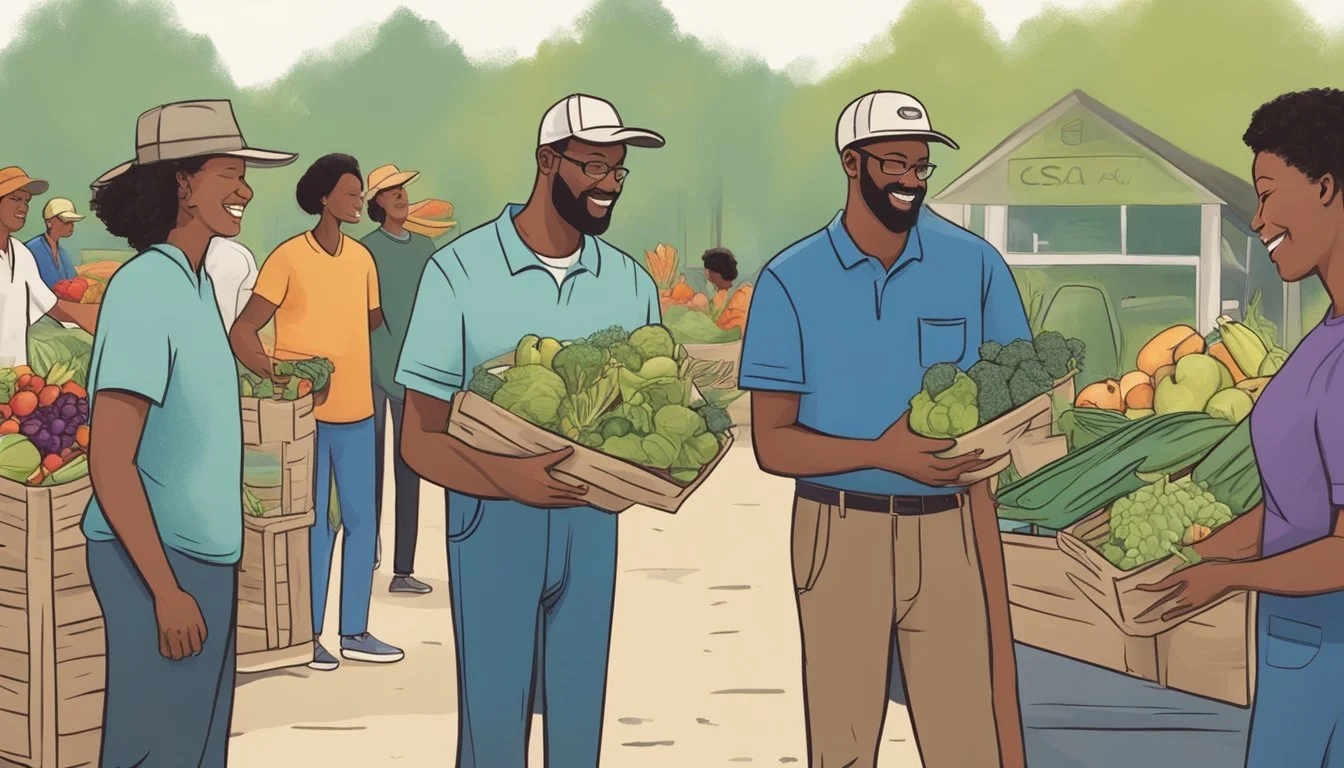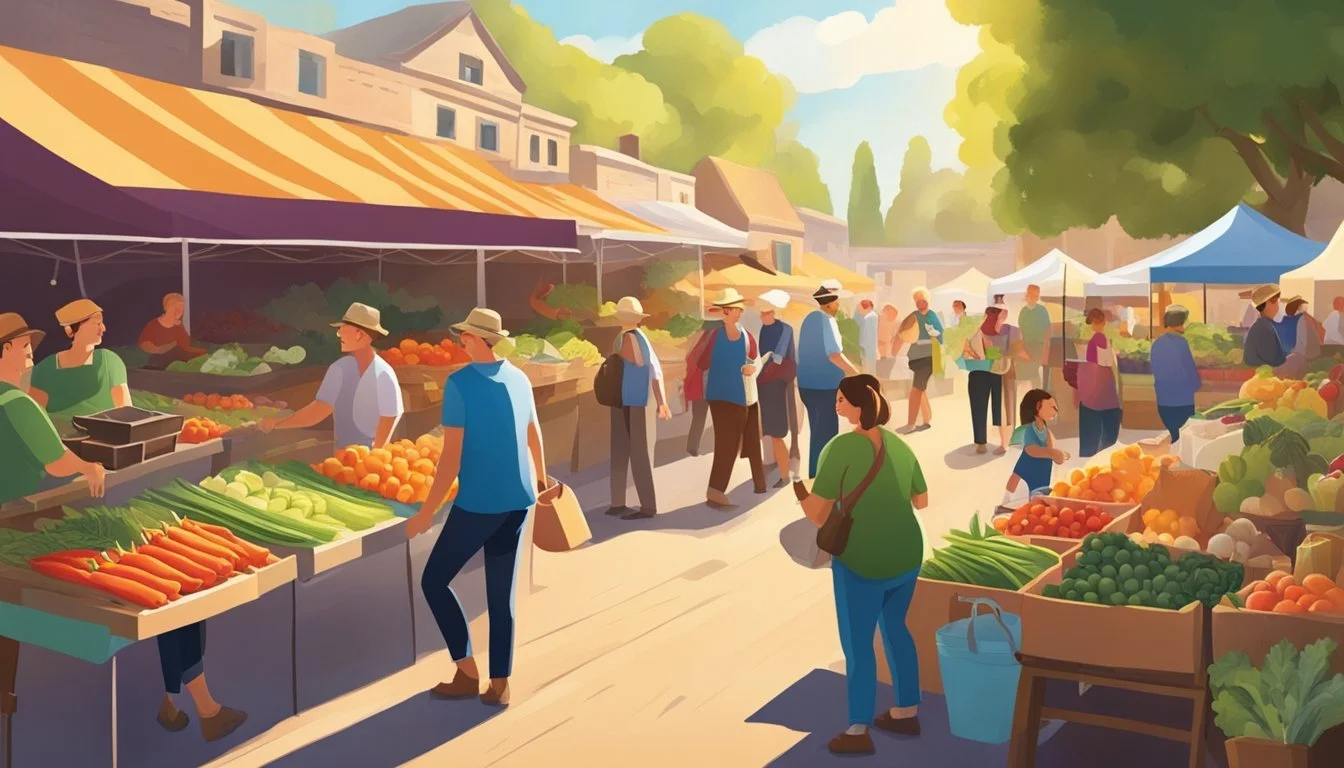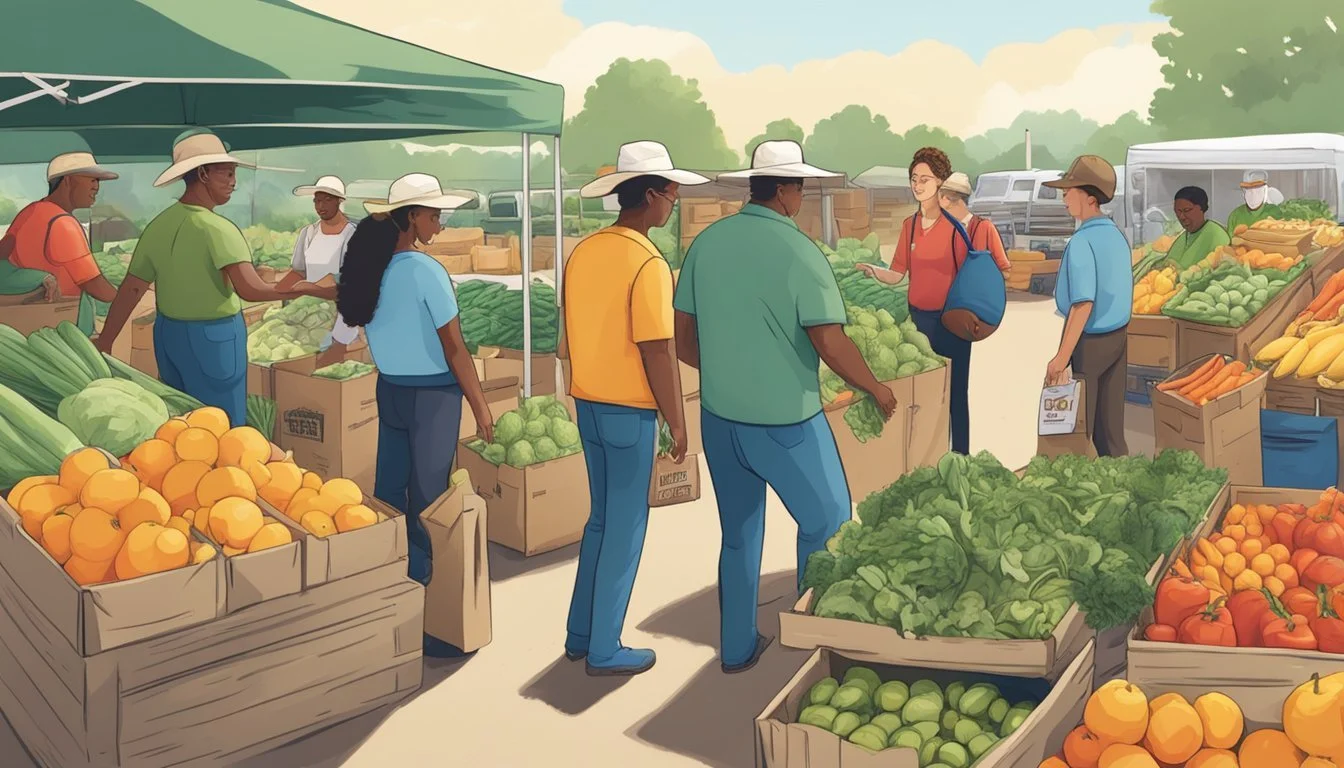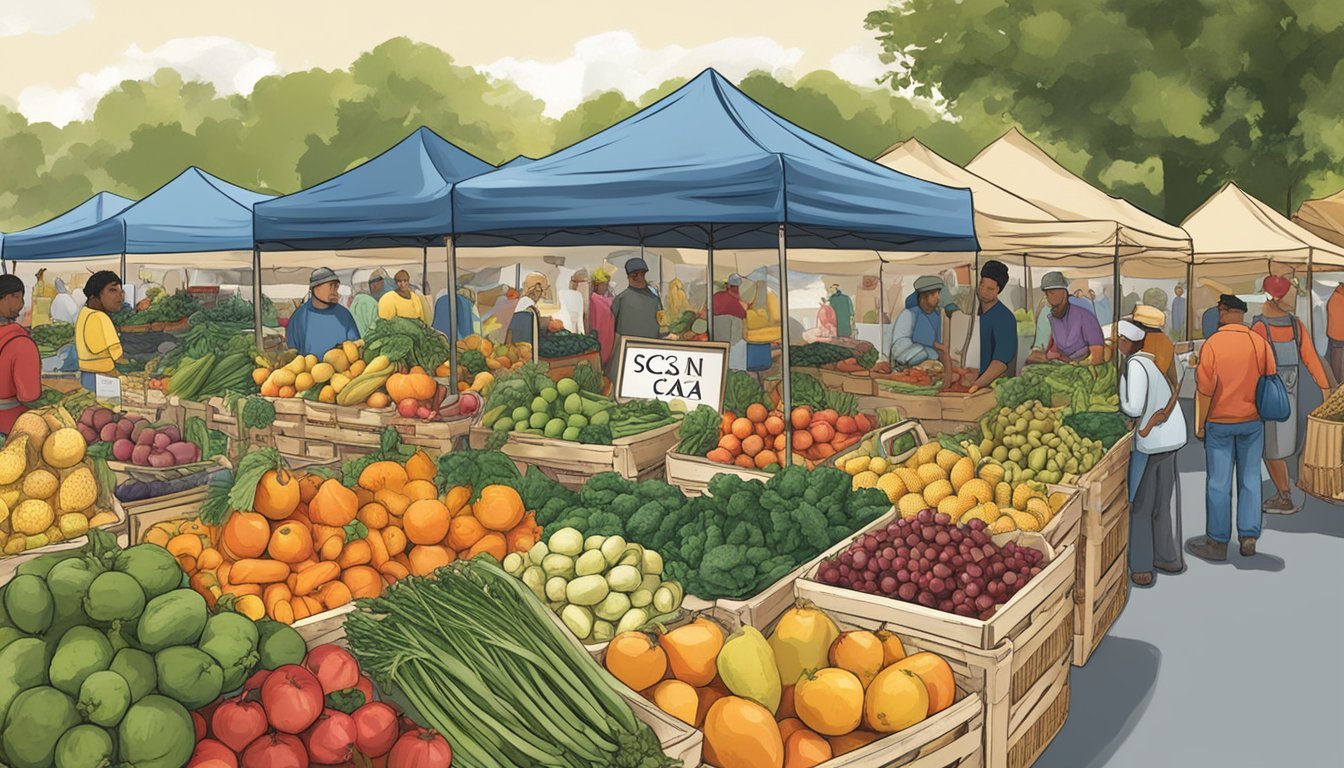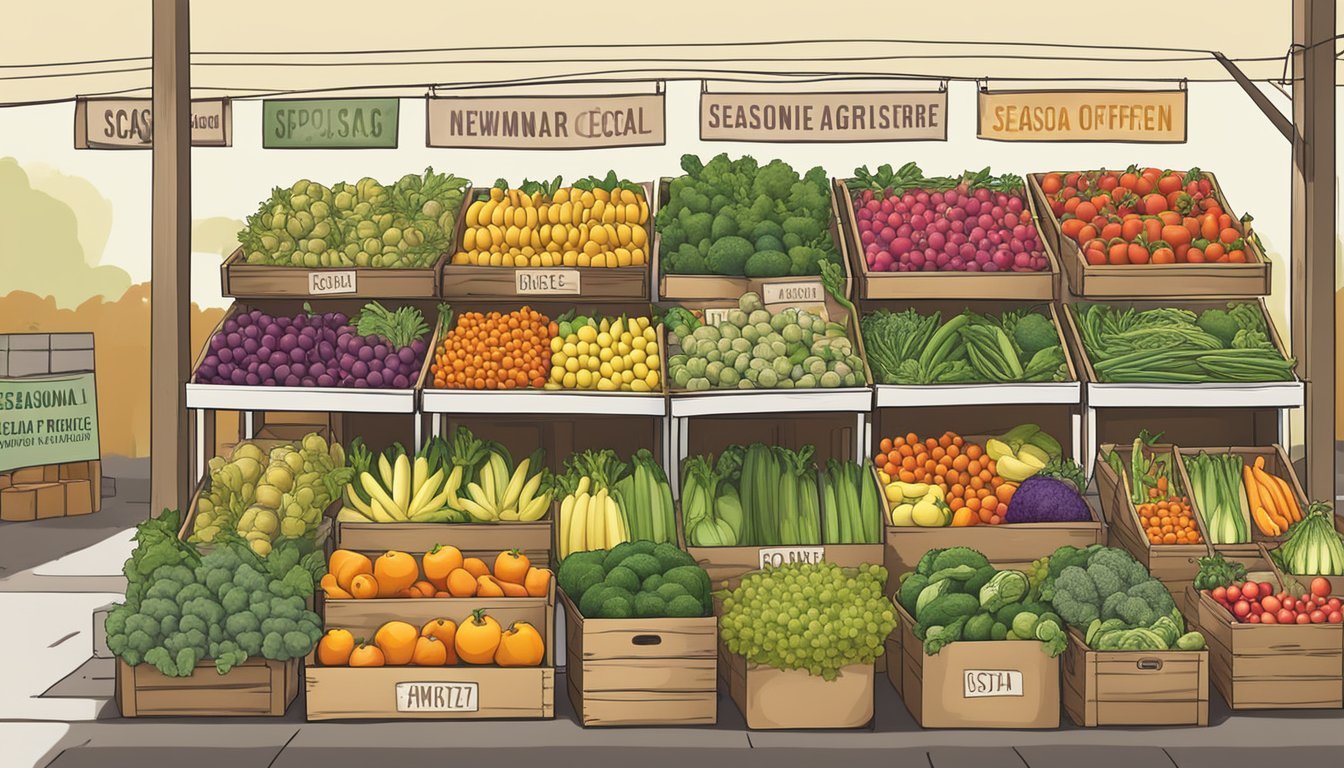Community Supported Agriculture (CSA) in Delaware
A Guide to Local Farm Partnerships
Community Supported Agriculture (CSA) is a burgeoning model within Delaware's agricultural framework that serves to bridge the gap between local consumers and farmers. Through CSA programs, Delaware residents are able to subscribe to the harvest of participating local farms, receiving regular shares of fresh, seasonal produce directly from the source. This system not only fosters a sense of community engagement but also fortifies food security by ensuring that a diverse array of fruits, vegetables, and herbs are accessible to households across the state.
In Delaware, this approach to agriculture is particularly significant due to the state's commitment to supporting local food systems and ensuring agricultural sustainability. Programs led by organizations like the Food Bank of Delaware yield productive harvests year-round and are instrumental in providing nutritious food options to the community. Moreover, partnering with local farms under these programs has enabled residents to receive fresh produce straight to their doors, highlighting the importance of CSA in enhancing the availability and accessibility of local foods.
CSA's popularity in Delaware is also reflected in the variety of options available to consumers. With an array of farms participating in CSA programs, individuals can choose from a multitude of shares that may include not only vegetables but also other farm products. The programs cater to the community's needs while also offering numerous benefits for local farmers. Through CSA subscriptions, farmers gain financial security with upfront payments for their crops, which can help them plan more effectively for the season and invest in their farming operations.
History and Principles of CSA
Community Supported Agriculture (CSA) represents a partnership between local farmers and community members that bolsters sustainable agriculture through shared risks and benefits.
Origins of Community Supported Agriculture
One of the earliest examples of CSA in the United States dates back to 1986 with the establishment of Indian Line Farm in Massachusetts and Temple-Wilton Community Farm in New Hampshire. These farms set the stage for a farming model that has since proliferated across the nation, including into states like Delaware. The CSA model was conceived as a response to the growing concerns about the impacts of industrialized agriculture and as a way to reinforce the local food economy.
Indian Line Farm, MA: Founded in 1986.
Temple-Wilton Community Farm, NH: Also established in 1986.
Local communities in Delaware and throughout the United States were inspired by the success of these farms and have embraced the CSA model to support local agriculture and strengthen the bond between consumers and their food sources.
Core Concepts of CSA
The CSA model is grounded in several key principles that define its function and aims within the agricultural community.
Community Engagement: CSAs rely on active participation from community members, who often purchase shares of the farm's harvest in advance, providing the farmer with operating capital at the start of the growing season.
Shared Risk and Reward: Both the farmer and the community members share the risks of farming, including poor harvests due to unfavorable weather or pests. Conversely, they also share in the bounty of plentiful harvests.
Sustainability: CSA encourages ecological farming practices that minimize harm to the environment and promote soil health and biodiversity.
Local Economy: By committing to local farmers, CSA members keep their money within the local economy, support rural livelihoods, and reduce the carbon footprint associated with long-distance food transport.
The principles of CSA underscore a symbiotic relationship where the local community gains access to fresh, locally-grown produce, and farmers receive the support they need to maintain a stable and ethical agricultural business model.
CSA Benefits and Challenges
The concept of Community Supported Agriculture (CSA) brings forth a plethora of benefits while also facing certain challenges that are intrinsic to its model. Both consumers and farmers find value in this synergy, though they must navigate potential difficulties intrinsic to this approach to agriculture.
Advantages for Consumers and Farmers
Consumers benefit from CSAs by receiving fresh, nutritious produce directly from local farms. This direct-to-consumer model typically ensures a higher level of freshness and nutritional quality due to the minimized time between harvest and consumption. CSA members often express high satisfaction, not only from the produce they receive but also from the knowledge that they are supporting sustainable agriculture and their local economy.
Freshness and Nutrition: CSA produce is often harvested at the peak of ripeness, providing members with nutrient-rich food.
Support for Local Farms: By committing to a CSA, consumers help ensure financial stability for small farms.
Farmers, on the other hand, gain a reliable customer base, which can lead to improved financial planning and reduced marketing costs. They are also able to receive payment early in the season, which can help with the farm's cash flow.
Financial Stability: Prepaid CSA memberships provide farmers with early-season capital.
Reduced Waste: With a known customer base, farmers can plant and harvest more accurately, reducing the potential for waste.
Community Engagement: Farmers often report a sense of community and connection with their members.
Potential Difficulties
Despite the evident benefits, CSAs also encounter challenges. Consumers sometimes face the "risk-sharing" aspect of CSA membership, where they share in the potential for less produce in a year due to poor weather or pests. This requires a level of commitment and acceptance of variability in the quantity and types of produce received.
Seasonal Variability: The quantity and variety of produce can fluctuate, affecting consumer expectations.
Farmers must contend with the pressures of managing such a direct relationship with consumers, which can include increased expectations for variety and consistency. Additionally, the operational logistics of packaging and distributing CSA shares can be complex.
High Expectations: Maintaining a diverse and consistent supply of produce can be stressful and labor-intensive for farmers.
Distribution Logistics: Orchestrating the packaging, distribution, and pick-up of CSA shares requires meticulous planning.
Overall, CSAs represent a viable model for fostering a resilient, local food system that brings fresh produce to consumers while sustaining local farms. They embody a partnership that supports both sustainable agriculture and community well-being, though not without the need to manage specific inherent challenges.
How CSA Works
Community Supported Agriculture (CSA) in Delaware functions through a system of memberships and subscriptions, where members receive shares of fresh produce distributed regularly. It offers a direct link between consumers and local farms, ensuring access to seasonal vegetables and fruits.
Membership and Subscriptions
CSA programs begin with consumers purchasing a subscription to a farm’s produce for a season. This model offers a sense of security for the farmer, as it provides upfront capital to cover the anticipated costs of farm operation. Subscribers essentially become members of the CSA and are often required to pay for the entire season's produce in advance. This membership entitles them to a share of the harvest, which typically includes a variety of vegetables and, occasionally, fruits.
Example of CSA Membership Options:
Full Share: Ideal for families
Half Share: Suitable for individuals or small families
Shares and Distribution
Shares represent portions of the farm’s harvest and are distributed to CSA members on a regular basis, which can be weekly or bi-weekly. The content of these shares usually varies throughout the season depending on what the farm is currently harvesting. Typical offerings include a range of vegetables and, when available, fruit.
The distribution is often organized through a pick-up system where members collect their shares from specified locations. Pick-up points can include the farm itself or designated community spots.
Distribution Details:
Pick-up times are pre-scheduled, often with a weekday and weekend option for convenience.
Example of a share: A full share might include various vegetables such as leafy greens, winter squash, tomatoes, and peppers, sometimes supplemented by fruit like apples or berries.
Role of CSA in Local Economies
Community Supported Agriculture (CSA) programs play a pivotal role in bolstering local economies in Delaware. They connect consumers directly with local farmers, fostering a sustainable economic relationship that benefits both parties.
Supporting Local Agriculture
CSA models enable local farmers to generate reliable income by selling shares of their harvest directly to community members. This direct-to-consumer approach reduces reliance on wholesalers and helps stabilize farm revenue against market fluctuations. Subscribers to CSAs receive regular deliveries or pickups of fresh local produce, ensuring a consistent market for farmers. CSA members also often have the unique opportunity to visit the farms and engage with the growers, strengthening the tie between producer and consumer.
Economic Impact on Communities
Local Economies benefit from the multiplier effect when dollars spent on CSAs circulate within the community. This can lead to the creation of more local jobs, from farming to distribution. By keeping money in the local economy, farmers markets and CSAs encourage the development of related businesses, such as local food processors or farm-to-table restaurants. Additionally, supporting local agriculture through CSAs helps keep farmland in production, maintaining the rural character and environmental health of Delaware's landscape.
Getting Involved with CSA in Delaware
Delawareans have ample opportunities to connect with local farmers and receive fresh, seasonal produce through Community Supported Agriculture (CSA) programs. These programs not only provide access to nutritious food but also strengthen community ties.
Finding a CSA Near You
There are various CSA options throughout Delaware, catering to different areas including Wilmington, Newark, and Milford. For New Castle County residents, options include the Food Bank of Delaware, located at 222 Lake Drive in Newark, serving as a pick-up point every Wednesday and Thursday. Kent County offers choices such as the Woodland Harvest Farm in Seaford, highlighting organic vegetables and herbs available from May through September. In Milford, you can find CSA programs where you can either pick-up your produce or have it delivered to your doorstep.
New Castle County: Food Bank of Delaware, Newark
Kent County: Woodland Harvest Farm, Seaford
Sussex County: Totem Farms, Milton
To find a local CSA, consider visiting local farmers' markets or searching online directories that list CSA programs by location.
What to Consider Before Joining
When choosing a CSA, it's important to ask questions about the subscription:
What is the duration of the CSA season?
How is the produce distributed?
What is the cost, and are there payment plans available?
Consider the location of the CSA and the convenience of the pick-up sites. Proximity to towns like Camden-Wyoming, Smyrna, and Dewey Beach can influence your decision. Reflect on your household’s needs and your interest in trying new produce varieties, as CSAs often include less common items in their shares. Assess whether the CSA's offerings align with your eating habits and cooking preferences.
By joining a CSA in Delaware, individuals can savor fresh, local produce, support community agriculture, and contribute to food sustainability in their region.
Seasonal Produce and Offerings
Community Supported Agriculture (CSA) programs in Delaware highlight the seasonal availability of fresh, local produce, providing a direct link between the state's farmers and consumers. Members receive a regular supply of locally grown produce, including a vast array of vegetables, fruits, and herbs that vary by season.
Summer and Fall Harvest
During the summer and fall, Delaware's CSA programs offer an abundant variety of fresh produce. Participants can expect to receive corn, which is a staple crop in the region, alongside vibrant peppers of varying heat and sweetness. Local farms also provide a range of lettuce varieties, perfect for summer salads. The fall harvest brings sturdier vegetables like potatoes, which are a versatile staple in many kitchens.
Summer:
Corn: Sweet and ideal for grilling or boiling
Peppers: Ranges from bell to spicier options
Lettuce: Includes romaine, leaf, and other mixed greens
Fall:
Potatoes: From classic russets to colorful varieties
Herbs: Freshly picked for robust flavor—basil, parsley, and more
Additional harvest: Squash, pumpkins, and hearty root vegetables
Winter Offerings and Storage Crops
As the weather cools, Delaware's CSA farms shift to providing storage crops and winter-hardy produce. Root vegetables like potatoes remain prominent thanks to their excellent storage capabilities. Even in the coldest months, farmers continue to supply a variety of herbs that are grown in more controlled environments, ensuring that fresh flavors are available year-round.
Winter:
Potatoes: Continuously available, can be stored for long periods
Herbs: Indoor cultivation allows for a fresh supply despite the cold
Hardier greens: Limited selections of kale and collards withstand colder temperatures
Farms adopt innovative practices to extend the growing season and the availability of fresh produce, utilizing techniques such as high tunnels and greenhouse cultivation to ensure a consistent supply to their CSA members.
CSA and Community Outreach
Community Supported Agriculture (CSA) programs in Delaware play a pivotal role not only in providing fresh produce but also in facilitating community outreach through education and assistance to low-income families.
Education and Nutritional Programs
The Food Bank of Delaware operates a fruitful farm that educates the community on agriculture while yielding over 50 types of fruits, vegetables, and herbs. Their agriculture initiatives aim to engage the community in sustainable food practices. The outreach includes programs tailored to educate individuals on the nutritional benefits of fresh produce. Additionally, the University of Delaware contributes through student-run CSA programs that teach university students and employees the significance of sustainable food systems.
Assistance for Low-Income Families
CSA programs often extend their reach to support families in need and low-income communities. They provide affordable access to fresh produce, often working in conjunction with programs like the U.S. Department of Agriculture's Supplemental Nutrition Assistance Program (SNAP). Shareholders within these CSA programs, including SNAP recipients, benefit from the locally grown, nutritious food, thereby fostering food security. This collaborative approach demonstrates how CSA can integrate agricultural productivity with critical food assistance for those in need.
Specialized CSA Programs
In Delaware, CSA programs extend beyond the usual produce offerings. Consumers have the opportunity to gain access to a diverse range of farm-fresh, organic, and additional items through specialized initiatives.
Organic and Biodynamic Farms
Organic CSA farms uphold the standard of avoiding synthetic pesticides and fertilizers, focusing on sustainable and environmentally friendly farming practices. For example, a CSA program can offer more than just vegetables by including a variety of flowers and herbs, greatly enriching the seasonal selections. Biodynamic farms take these practices a step further, integrating holistic agricultural methods that treat farms as cohesive, interconnected living systems.
Organic farms provide an array of farm-fresh vegetables and fruits.
Biodynamic agriculture considers lunar cycles and ecological interdependence.
Non-Produce CSA Options
In addition to produce, some CSA programs in Delaware offer non-produce options such as meat or additional farm products. This diversification meets the demand for a complete farm-to-table experience and supports local agriculture comprehensively.
Meat: Locally raised and processed, it often includes beef, poultry, and pork.
Additional Items: These can range from fresh-cut flowers to homemade jams and dairy products.
Additional Resources and Information
This section provides valuable resources and specific tips for those involved or interested in Delaware's Community Supported Agriculture. It is tailored to assist individuals in enhancing their culinary skills with fresh produce, connecting with local CSA programs, and engaging with the agricultural community.
Workshops and Cooking Tips
Delaware's CSA programs, such as those at Highland Orchards on Lake Drive, often offer more than just fresh produce. They can be a source of educational workshops that teach subscribers how to prepare seasonal produce. Cooking tips and recipes are sometimes provided in a newsletter, giving members a chance to expand their culinary repertoire.
Workshops: Check CSA newsletters or websites for upcoming events.
Cooking Tips:
Highland Orchards: Offers recipe ideas for their diverse range of produce.
University of Delaware: May provide cooking and nutrition classes aligned with the agricultural seasons.
CSA Networks and Associations
The University of Delaware and other organizations facilitate networks that support the CSA model, fostering relationships within the agricultural community. These networks can offer resources like SNAP benefits for qualifying individuals, including seniors. Through these associations, members receive guidance on utilizing fresh produce and can connect with local farmers markets, enhancing the local food system's sustainability.
Associations:
Delaware Agricultural Community: connects with local CSA programs through the University of Delaware.
Market Connections:
CSA members can often find similar produce at local farmers markets.
SNAP Assistance: Some CSA programs on Allabands Mill Road and elsewhere accept SNAP benefits.


